If you’re going to play around with nuclear fission, it’s probably best to do so on a distant planet where (almost) zero humans are endangered by your efforts.

After weeks of preparation, including a couple of large-scale side projects to produce a few key required materials, I have a working nuclear power plant. As previously noted, it’s not like you need a whole lot of any particular material (other than water for the actual power plants) but you need a modest amount of quite a few different materials, processed and arranged in a rather complex way.
This savegame is centered on using rail to deliver most goods. Even so, I ended up needing five sets of drone ports (one of which supplies batteries to the others) to make this work, either because of logistical issues at the source or because trying to fit yet another train station into this site was more hassle than I wanted to deal with. For instance, my uranium source? Is at the top of a very, very tall stone pillar right next to the factory complex. I’m not running a train line several hundred meters directly upward, especially not when a drone can make the trip much faster.

Among the lessons I learned? Start your build with the end result and work your way “forward” from there. This could have saved me some materials logistics headaches partway into the project. For instance:
I delivered six materials (five solids and one gas) by train, and sited another material’s drone port above one of the train stations, so that’s seven things I needed to route from my supply source station complex over to the actual power factory. (I built the factory a bit of a distance away from the train lines & depots for what should be obvious reasons.)
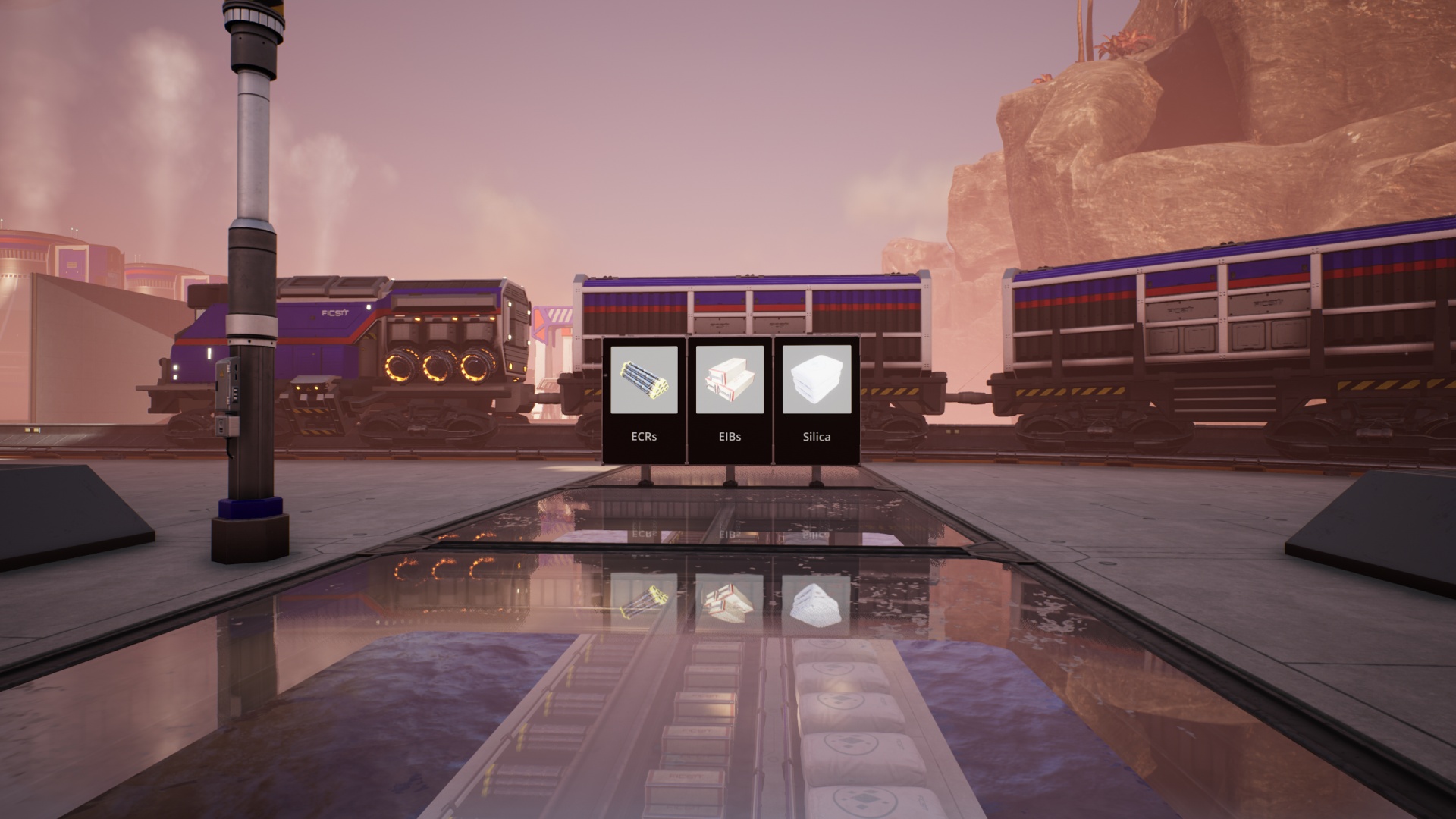
I felt awfully clever for the design of the materials routing arrangement, but when it came time to split out all the conveyor belts and pipes at the factory side of things, I realized I’d given myself quite the mess to sort out. Absolute spaghetti. Whoops!

Everything (eventually) ended up where it needed to go, and every time I thought I’d made the facility big enough I found I needed to expand it yet again until it was complete. Yes, even at the very end I was tacking another row of foundations onto the building. One of the truisms of Satisfactory remains, “If you think you have enough room in your building, you don’t.”
Once I got all of the waste processing equipment into place and connected, made sure my pipes and belts all ran where I needed them to, and felt that everything was ship-shape… I gave the order to the uranium supply drone to start picking up ore from the miner and drone port I’d already built way up at the top of the stone pillar.
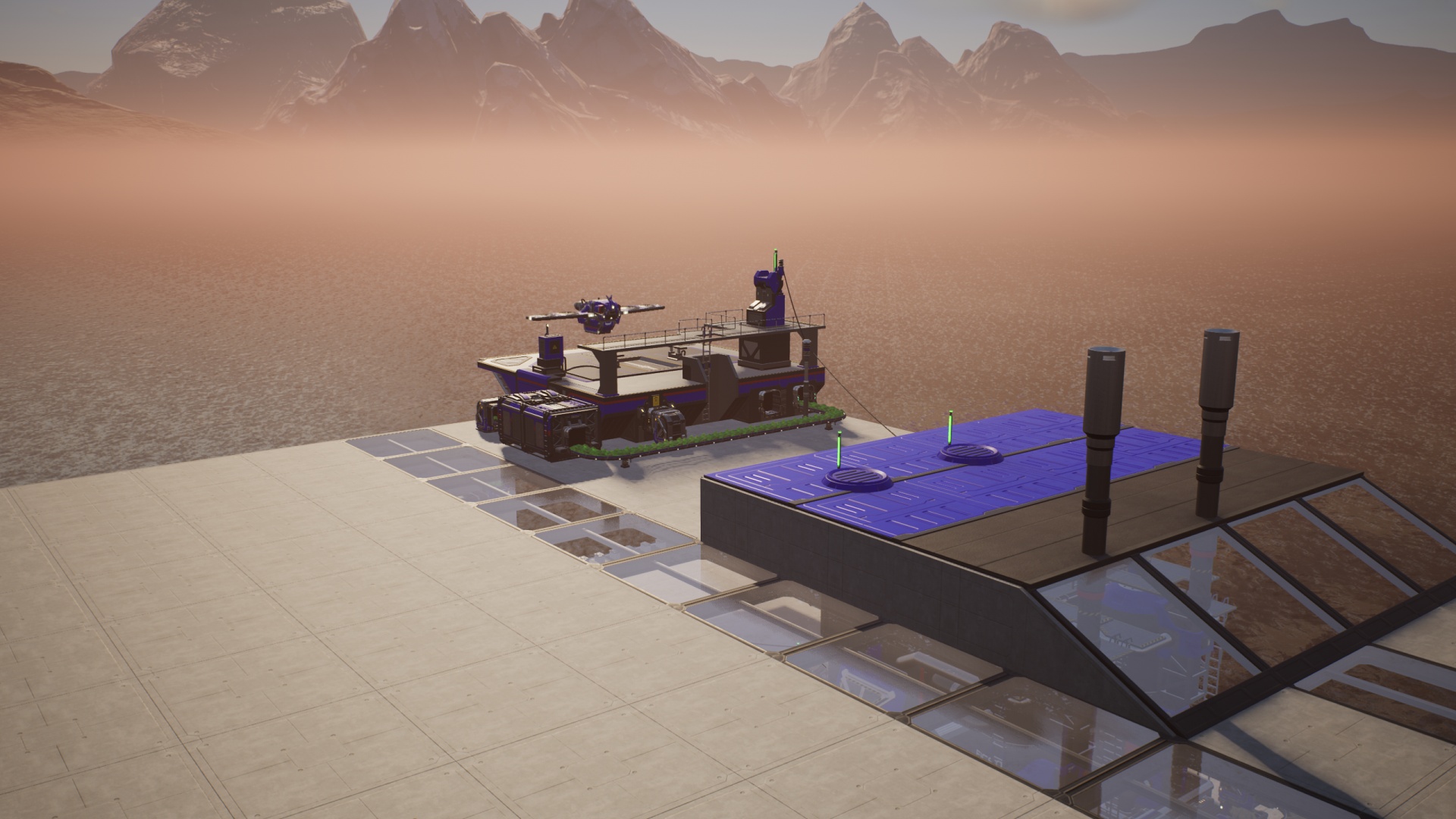
I mean, you absolutely wait until you’re sure everything will work before you introduce actual radioactive material to the project, right? I should hope so.
The biggest mistake I made when routing materials inside the plant building was one I’d been warned against when I was reading up on this kind of facility and forgot about until I’d fired everything up: You don’t want to use the manifold method for the uranium (but doing so is merely “inefficient”) or for delivering the fuel rods to the generators (doing so is actually actively bad)!
To summarize the problem for those unfamiliar with the game, there are two ways to feed materials into a line of machines. One is the manifold, where you basically just run a line of splitters down the row. This results in the first machine in the chain getting fully half of the initial supply of materials, the second getting one quarter, the third one eighth, and so on. (Splitters split evenly between any connected outputs. Two outputs connected? One item routes to the first and the next item to the other, lather rinse repeat.) It usually doesn’t take long for that first machine’s input to fill up, allowing machines further along to get more material input. (The splitter goes, “Oh, there’s no room on that belt, I’ll send the item to the other one instead.”) So, it’s inefficient at first but after some time, as long as you keep enough material coming that all machines can operate at their configured capacity, it all smooths itself out in the end. And it’s super simple to build.
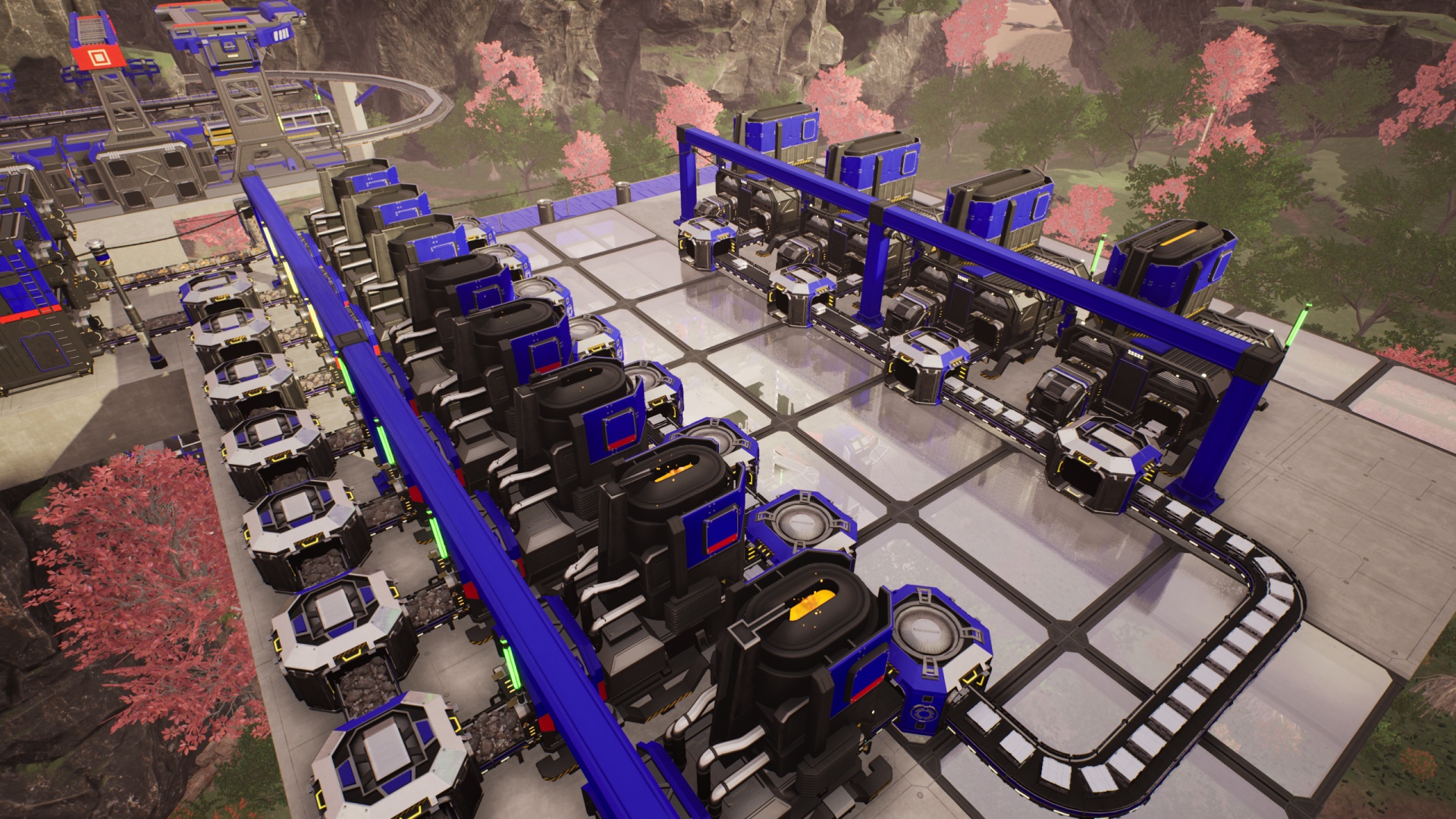
In short, manifolds are simple and their inefficiency issues tend to work themselves out before long.
The other way is load balancing. Using belt splitters, divide up the materials so that all machines are fed equally from the very start. This is a cumbersome arrangement which requires more space and more belts and more planning to get done right. But when you’re dealing with very low material input rates and want to make sure all machines involved are getting some kind of input right from the start, they’re absolutely the way to go.
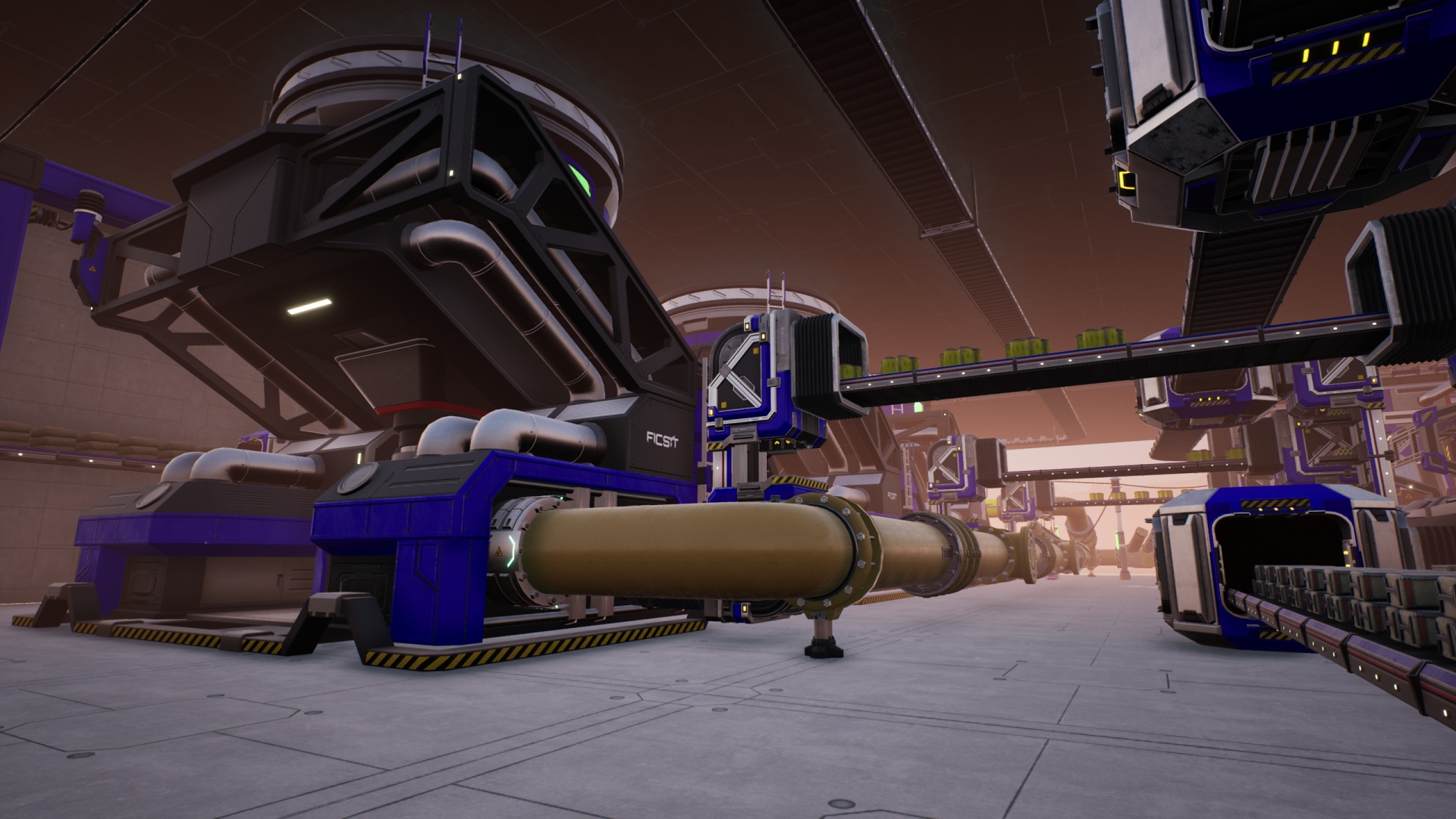
This is especially true for nuclear power plants. You’re never making lots of fuel rods at a time, and using the manifold method means that the first power plant in line accumulates, well, half of the meager output in its material port while the other plants starve. I could’ve been waiting days for the last plant in line to get more than one fuel rod out of every dozen or so!
What’s worse, the last plant in line needed to be operational more often because that’s where my “waste water” from one of the waste treatment machines was going. And if you aren’t processing waste material from a machine (if it produces waste at all) then it stops operating. Letting it “back up” is not permitted. Which in this case means I wasn’t processing nuclear waste.
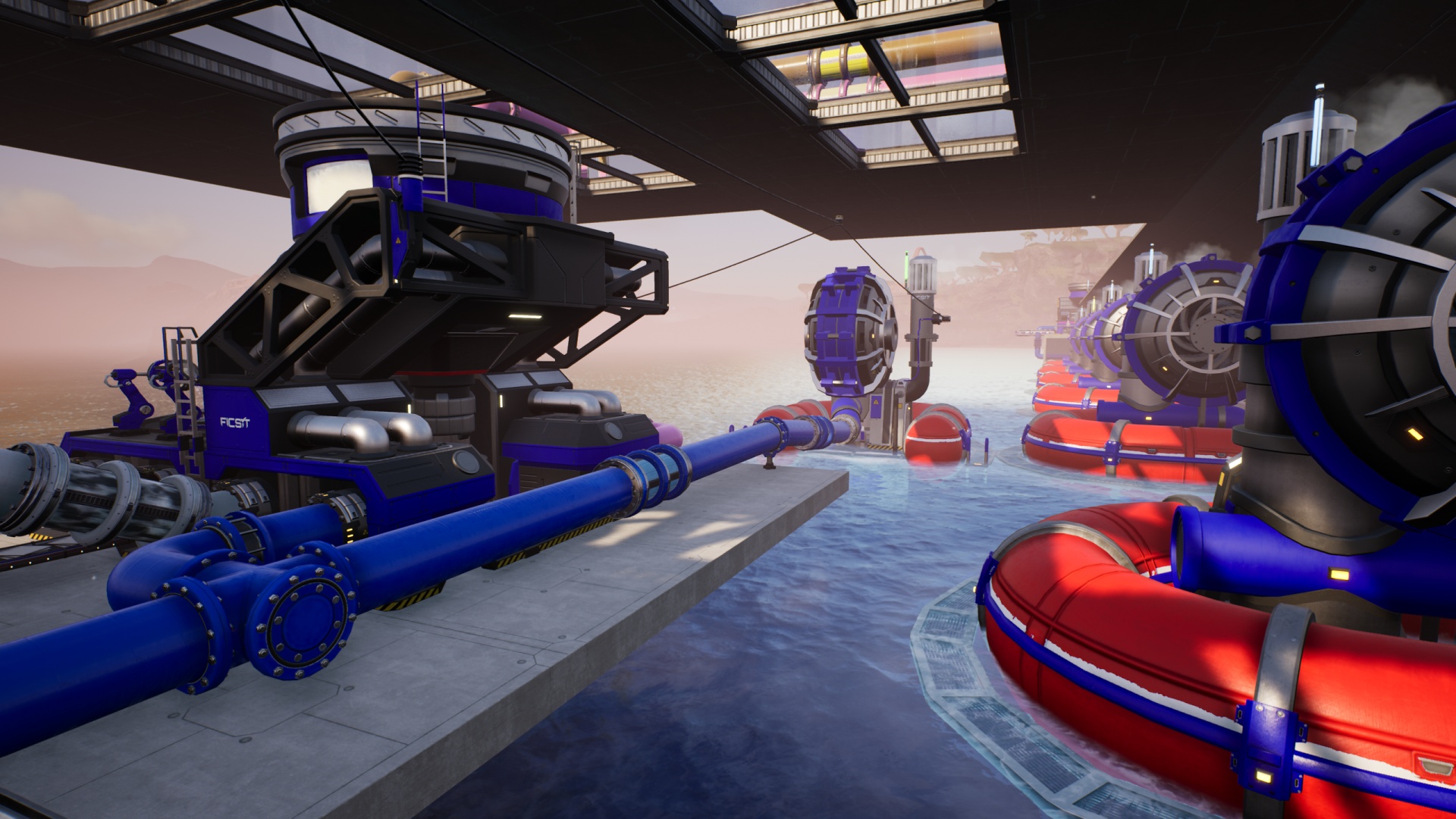
Well, that needed fixing. I made sure that my radiation suit’s iodine filters were stocked up, went inside the plant, and threw together a quick replacement load balancing rig (two way split to two three-way splits) and within a quarter hour I had all six reactors running and, almost as importantly, the waste processing Blender was happy again.
Whew.
Crisis averted, I settled in for a little while to watch the real show: The Particle Accelerator, part of the waste processing system for spent uranium fuel. A device I made a point of siting on top of the building, right outside where it can be viewed by any passers by.
(Yes, technically you can turn the uranium fuel waste product into plutonium fuel but the waste product of using that for power can’t be eliminated and must be stored somewhere… permanently. So, which part of the map would you like to render permanently and increasingly uninhabitable?)
Seriously, it’s not much of an exaggeration to say that a major source of incentive for even embarking on this project in the first place was that I’d get to see this thing in action:
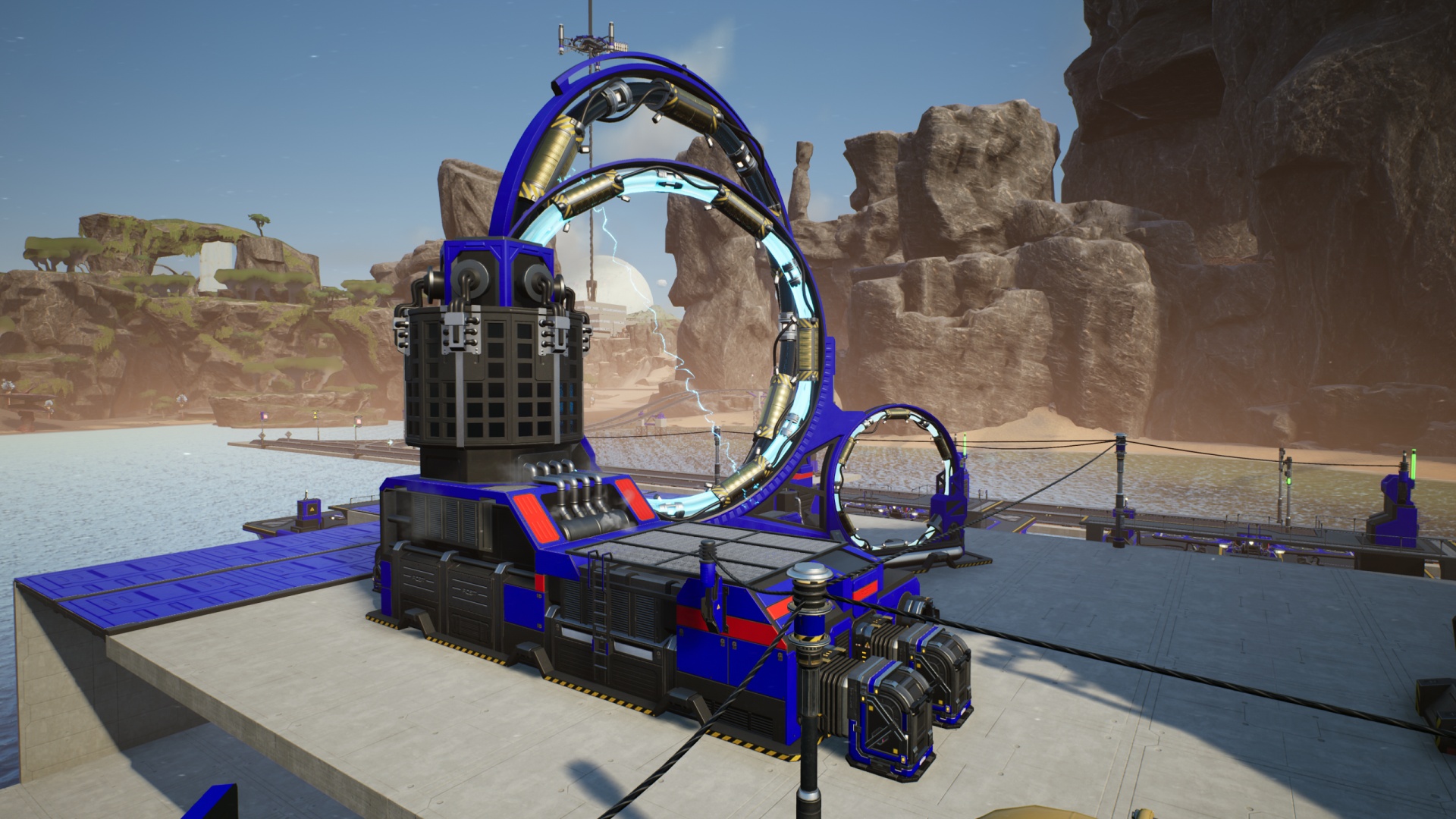
Worth it. I mean, the gigantic boost to available electrical power on the grid was also worth it, I suppose.
So. What would I do differently? I’d almost certainly have sited the supply transportation hubs in some other arrangement. I’m happy with the “start at one end, finish at the other” general flow of the factory but half of the materials I delivered were intended for the back end of the build.
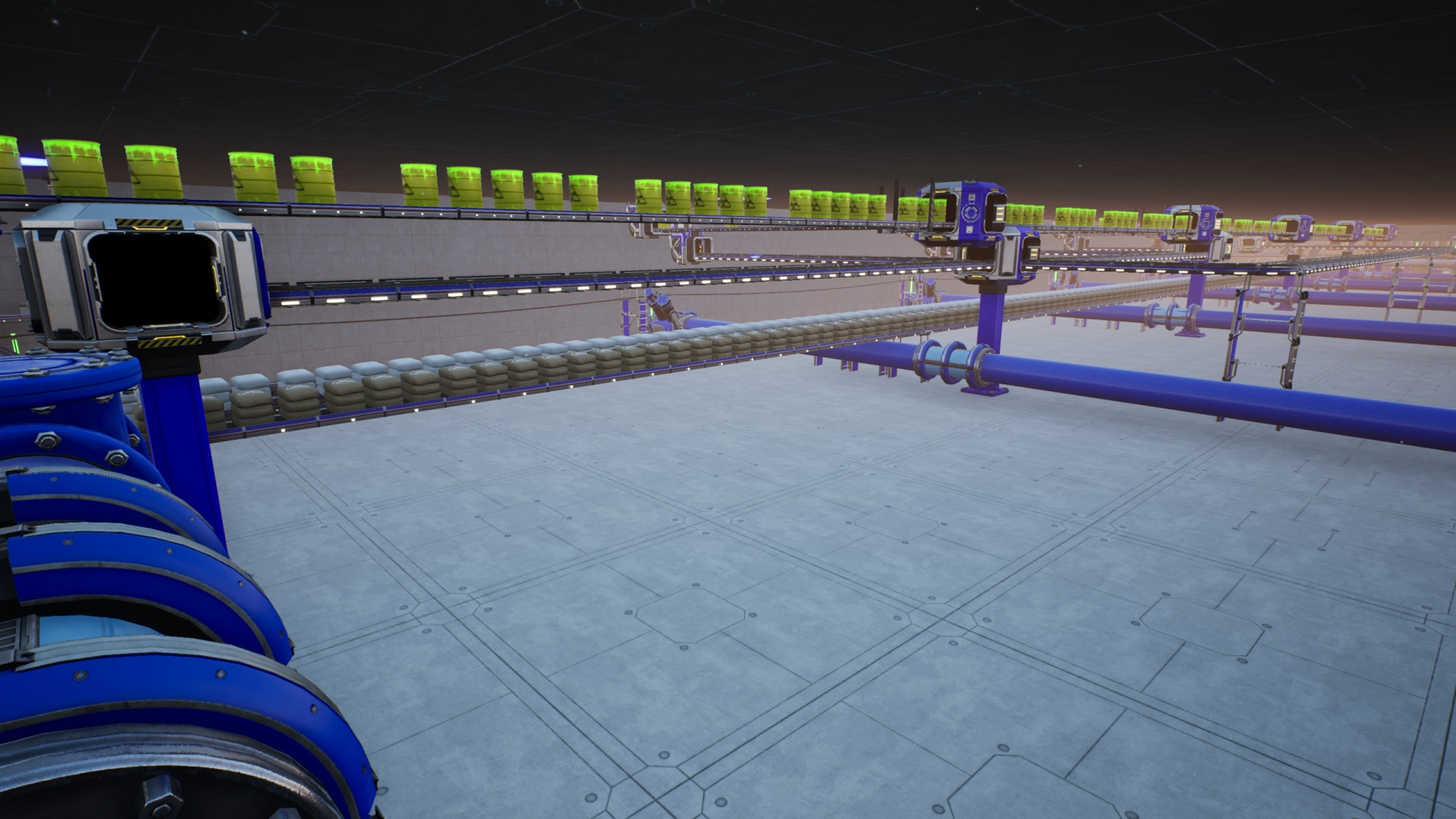
On the other hand, I don’t think I could have improved much on the acid production & transportation. I wanted to use just one water extractor to supply both the Nitric and Sulfuric Acid production machines, which I did, but most of the Sulfuric is needed at the start of the process and all of the Nitric (plus a small amount of Sulfuric) is used for waste processing at the end.
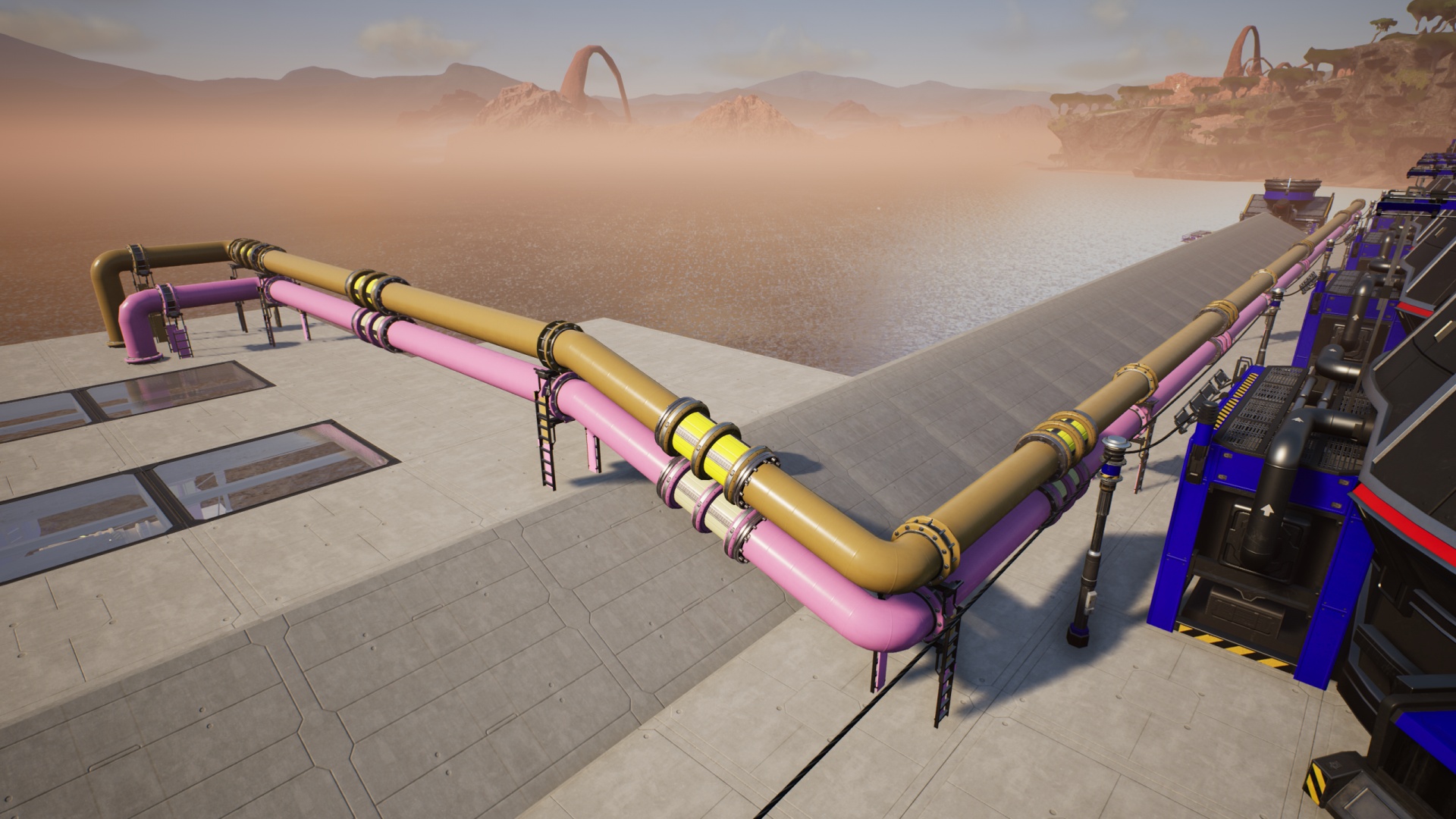
Eh. As long as you can make it look good, maybe some inefficiency is allowable, yeah?
In the end, I’m glad I went through this exercise. Other than sending off the final space elevator shipment, I’ve basically “beaten the game,” insofar as completing the official objectives has anything to do with my overall enjoyment and sense of accomplishment. I have so much power that I can actually tear down that crappy, clunky coal power plant (pointed out briefly in my rail tour video) and shouldn’t need to add the remaining 30-some-odd Fuel Generators to the Turbofuel plant any time soon.
So… I guess it’s time to look at what’s required to send off that final shipment. But not today.
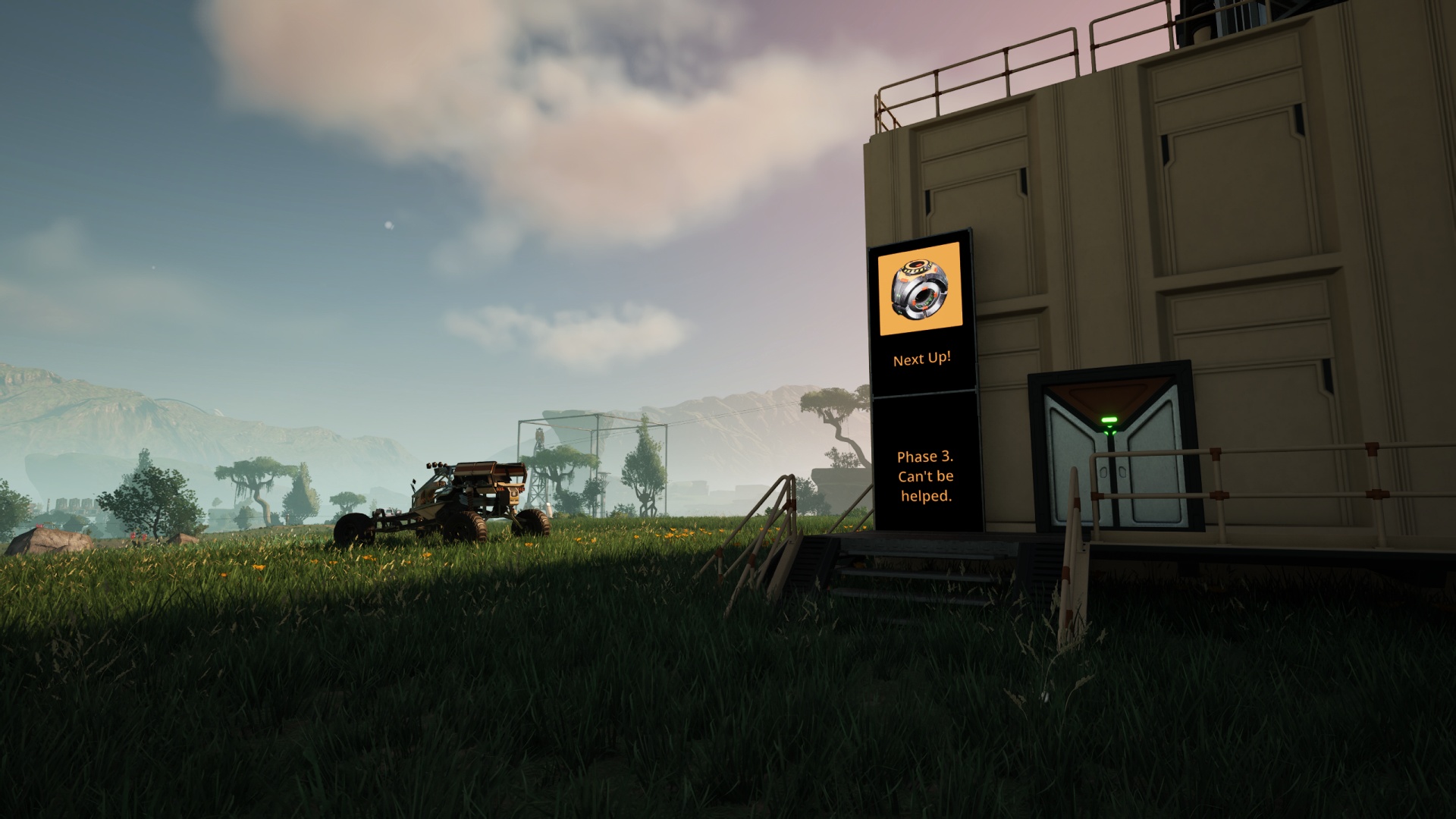
Comments
2 responses to “Satisfactory – Harnessing The Atom”
This is pretty sweet! You should post some videos of your plant! I def would like to get in and give this game a go.
Even in its not-yet-finished form, it’s a superb and (yes) satisfying game experience. Highly recommended.